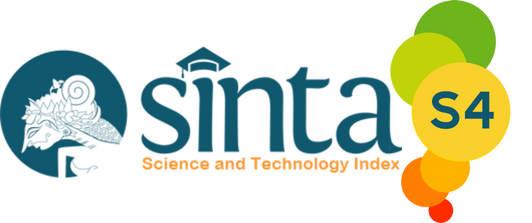FAKTOR-FAKTOR YANG BERPENGARUH TERHADAP KEPUTUSAN PETANI DALAM ADOPSI INOVASI KALENDER TANAM TERPADU DI KECAMATAN GEDANGSARI KABUPATEN GUNUNG KIDUL
Abstract
Keywords
Full Text:
PDFReferences
Allan R. 2000. ENSO and Climatic Variability in The Past 150 years, in. ENSO: Multiscale Variability
Asep, Saepul Muhtadi. 1999. Jurnalistik Pendekatan Teori dan Praktek. Jakarta: Logos Wacana Ilmu. Hal 173.
Azwar, Saifuddin, M.A. 2013. Sikap Manusia Teori dan Pengukurannya. Yogyakarta: Pustaka Pelajar. Hal 5
Djunaedi, Achmad. 2016. Spatial Patternsof Agriculture and Industrial Sector Linkages and Its Implication On Interregional. Collaboration A Study Of Kedungsepur Area. Hal 5-13.
FAO. 2011. Climate change and food security: A framework document. Food and agriculture organization of the united nations, rome.
Indraningsih, K. S. 2011. Pengaruh Penyuluhan Terhadap Keputusan Petani dalam Adopsi Inovasi Teknologi Usaha Tani Terpadu. Jurnal Agro Ekonomi. Volume 29 No.1, Mei 2011: 1-24.
Mardikanto. 2009. Sistem Penyulu- han Pertanian. Surakarta: Sebe- las Maret University Press.
Naylor RL, Falcon W, Wada N, Rochberg D. 2002. Using El- Niño Southern Oscillation climate data to improve food policy planning in Indonesia. Bull Indon Econ Stud 38: 75-91.
Soekartawi. 1988. Prinsip Dasar Komunikasi Pertanian. Univer- sitas Indonesia Press. Jakarta.
Stern, N., S. peters, V. bakhshi, A. bowen, C. Cameron, S. Catovsky, D. Crane, S. Cruickshank, S. Dietz, N. Edmonson, S.-l. Garbett, L. Hamid, G. Hoffman, D. Ingram, B. Jones, N. Patmore, H. Radcliffe, R. Sathiyarajah, M. Stock, C. Tylor,, T. Vernon, H. Wanjie, and D. Zenghelis. 2006. Stern Review: the economics of climate change,
Refbacks
- There are currently no refbacks.






